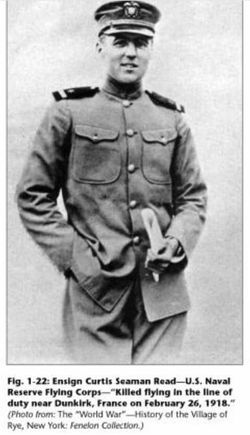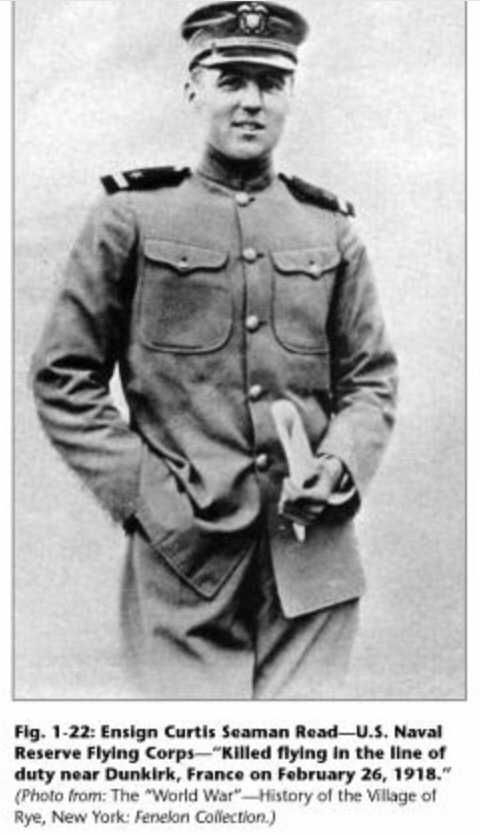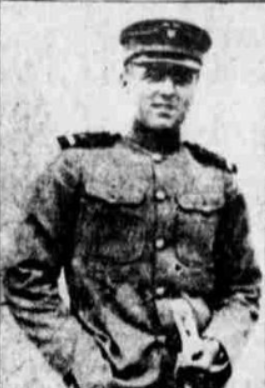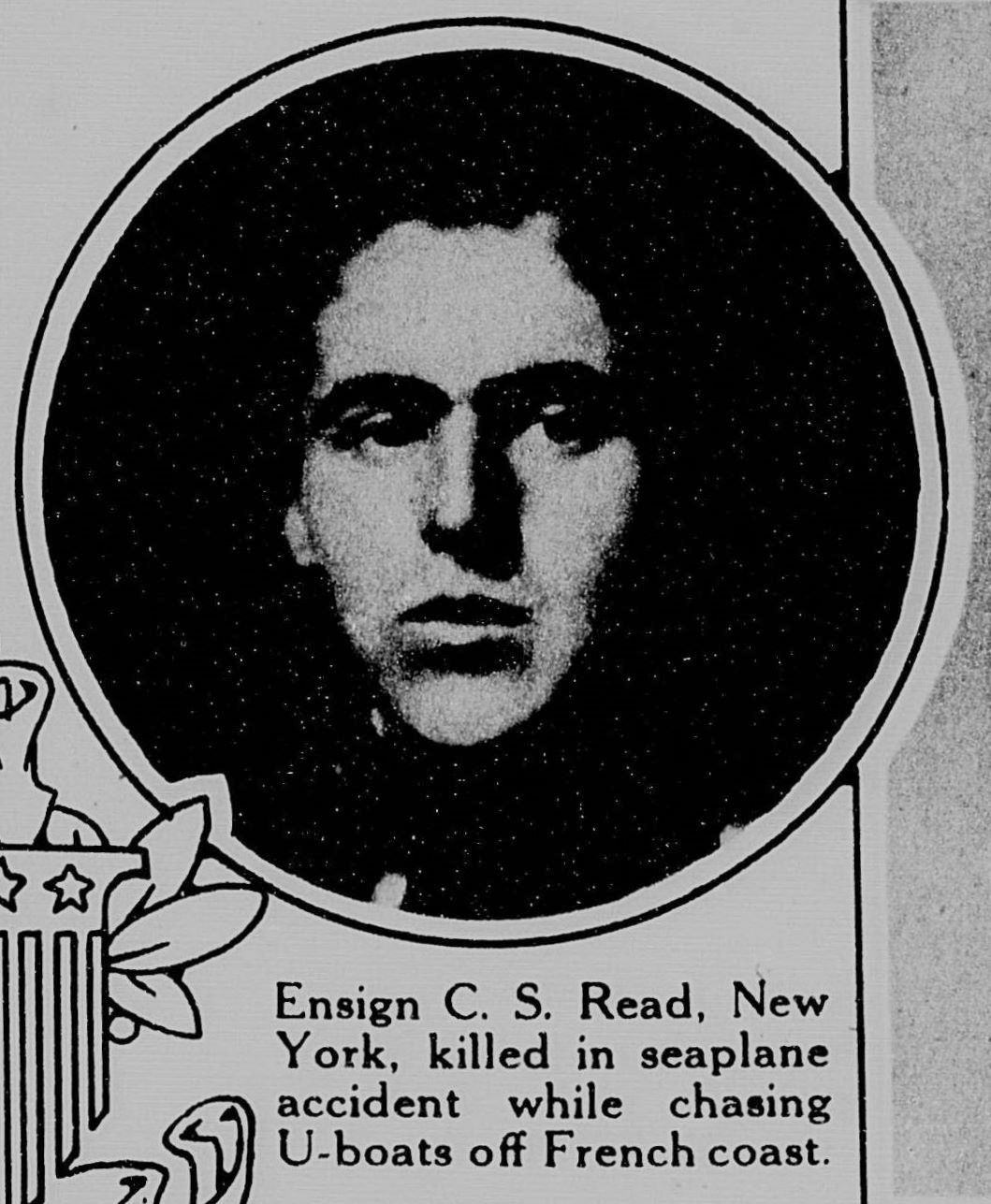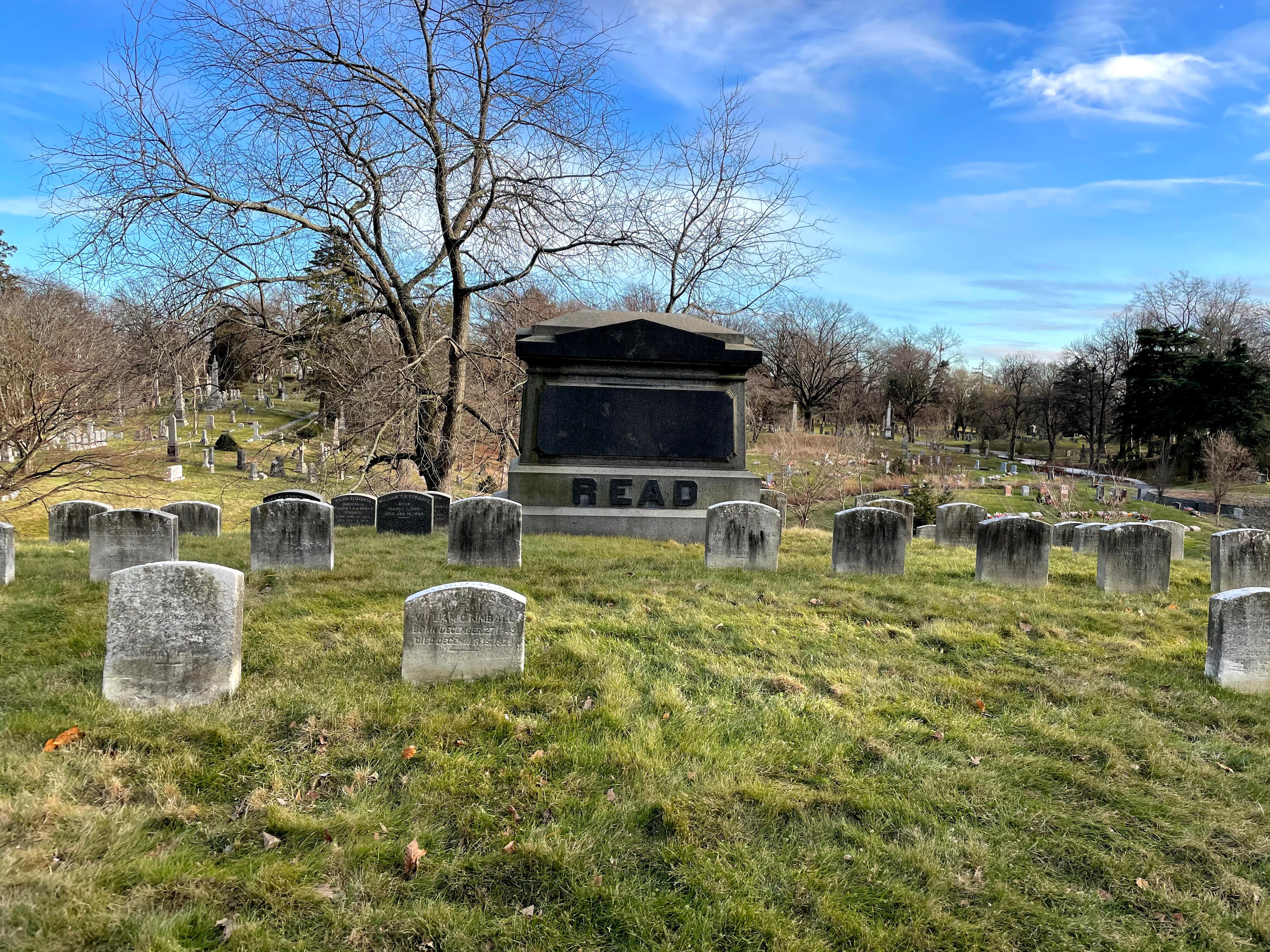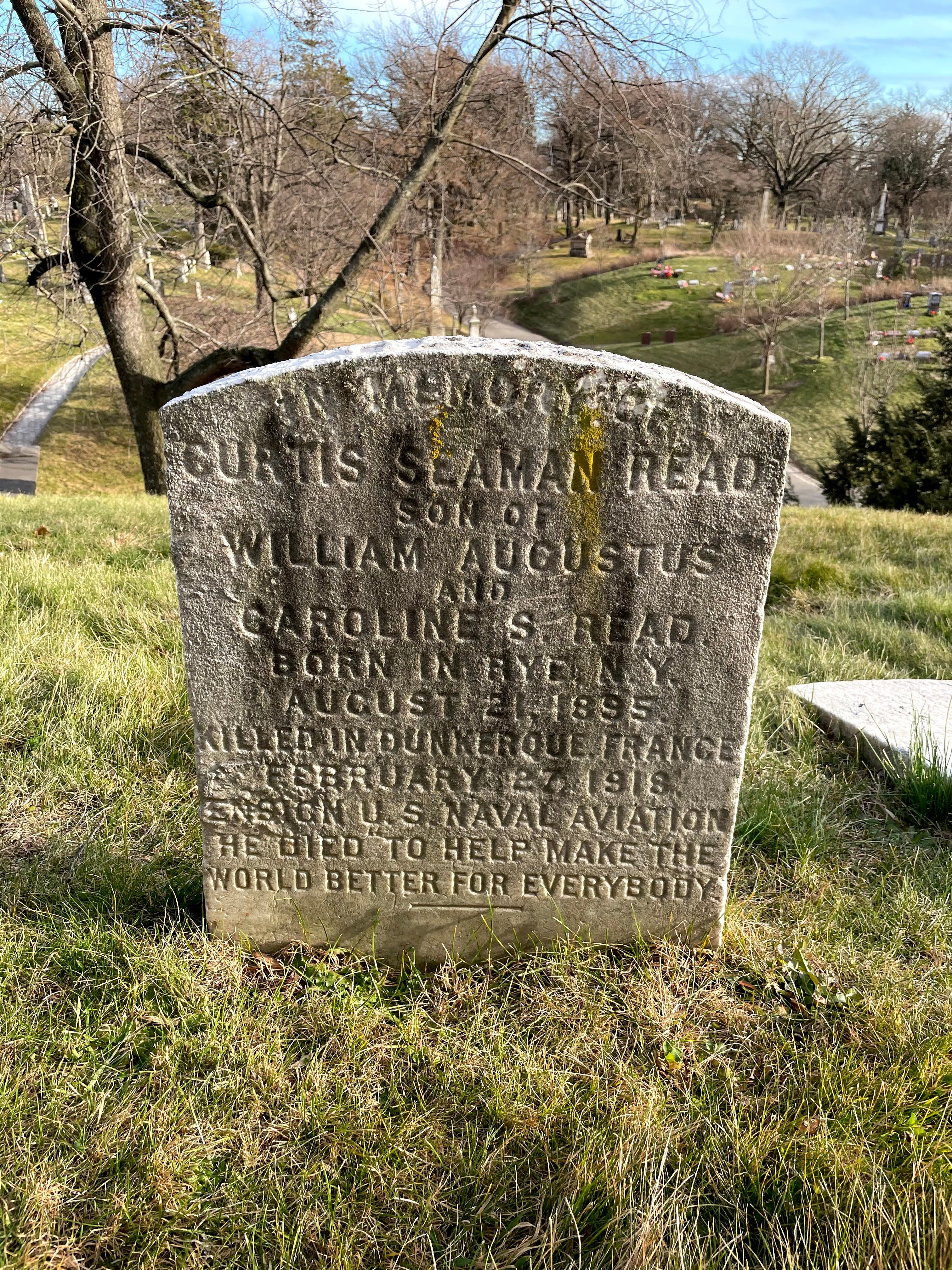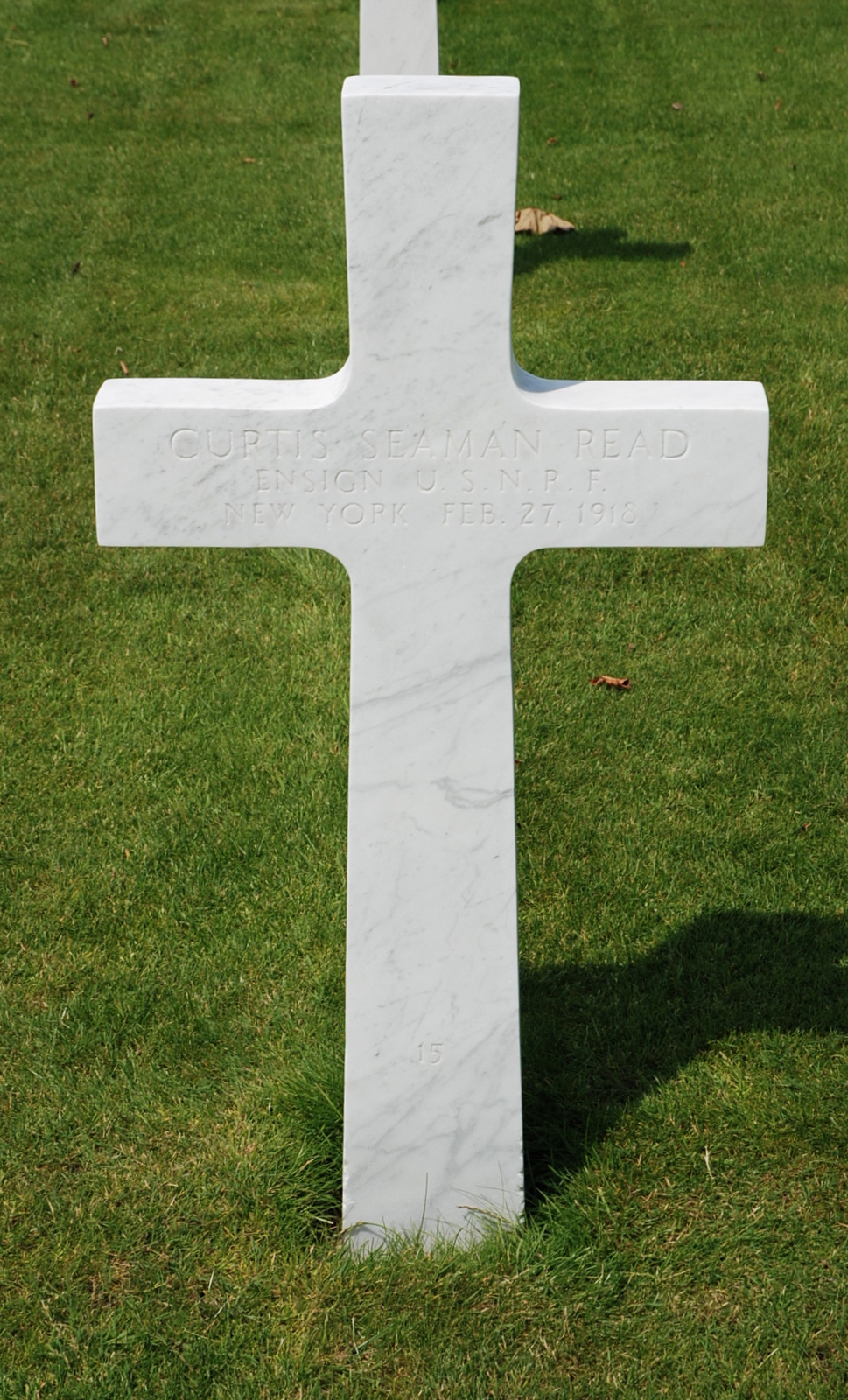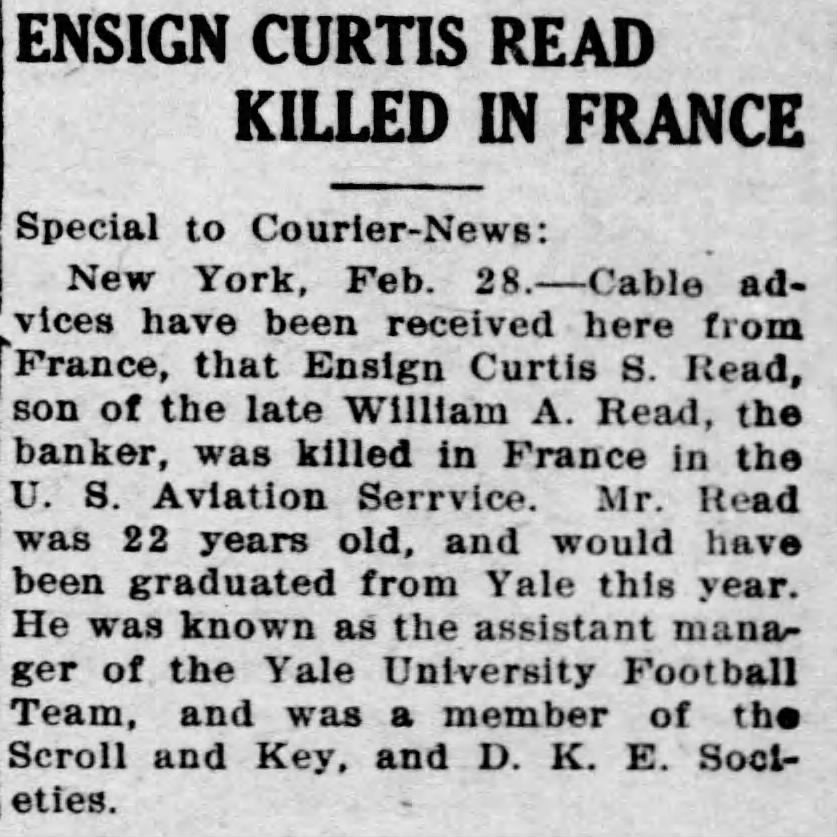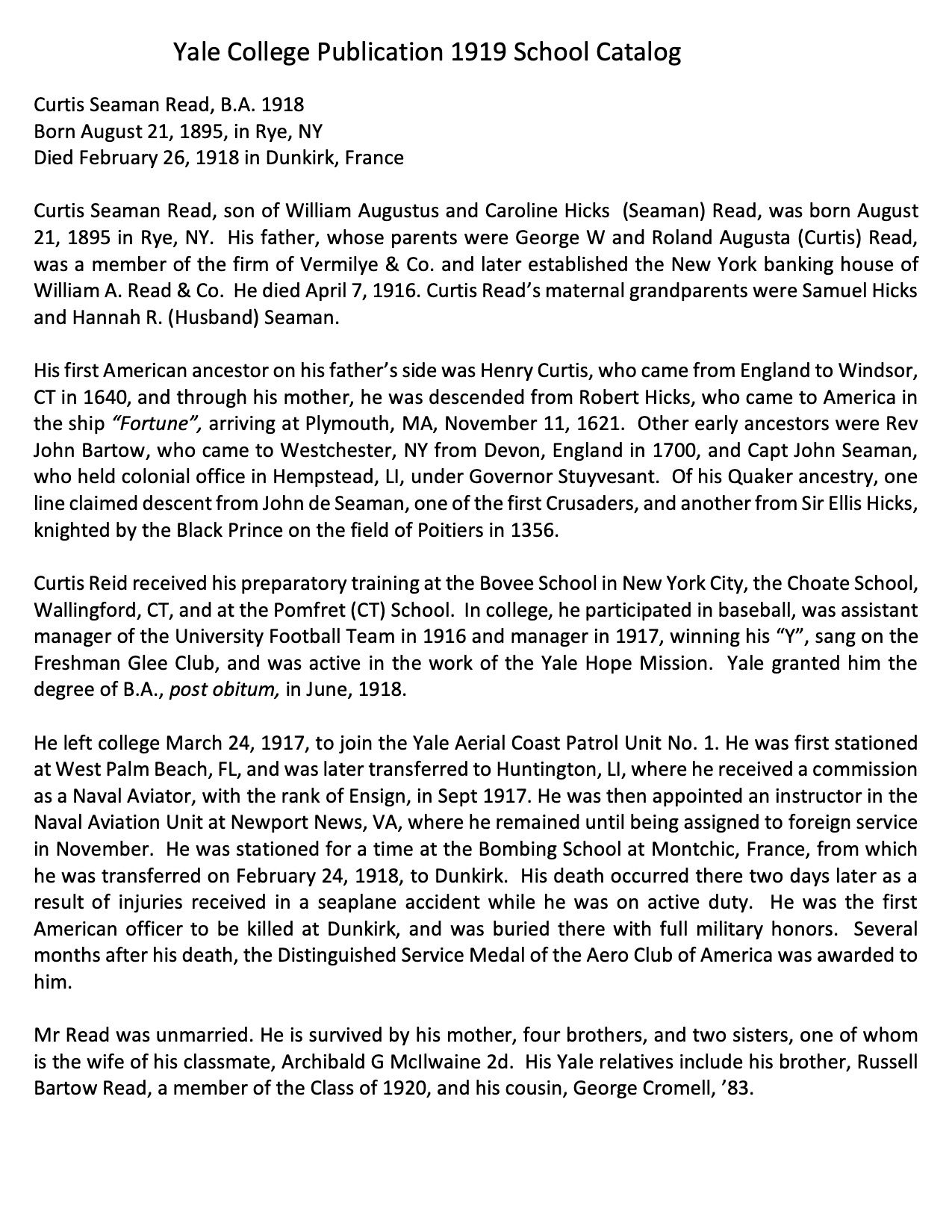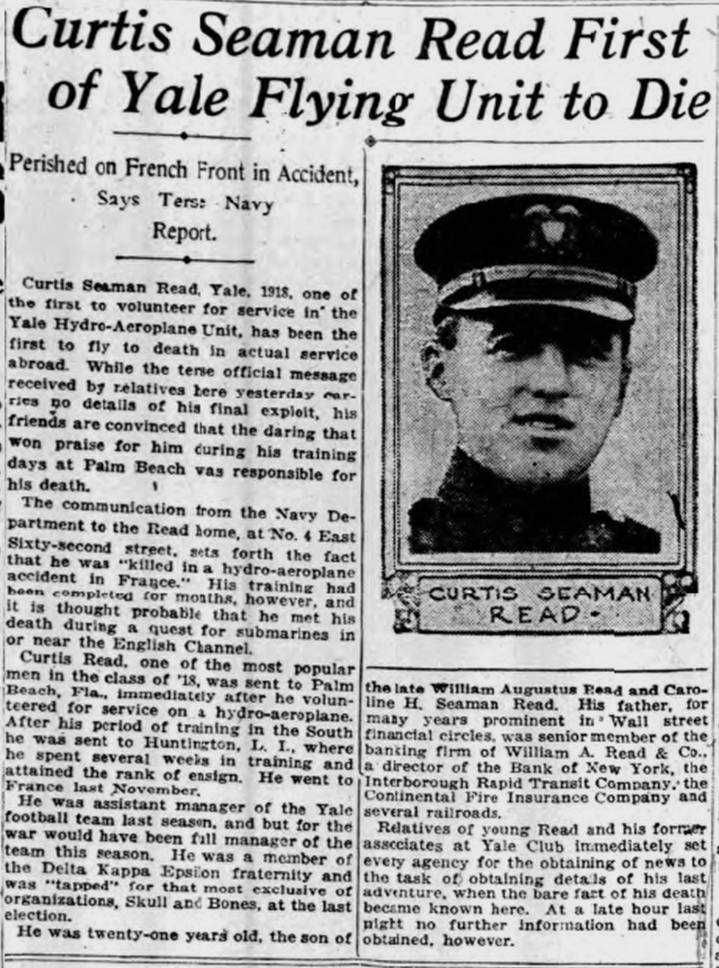He was the son of William Augustus and Caroline Hicks (Seaman) Read, and attended the Bovee School in New York City, the Choate School at Wallingford, Connecticut, and the Pomfret School in Pomfret, Connecticut before matriculating at Yale, where he participated in baseball, and was manager of the football team in 1917, winning his letter. He sang in the Freshman Glee Club, and was active in the work of the Yale Hope Mission.
He left college March 24, 1917, to join the Yale Aerial Coast Patrol Unit No. 1. He was first stationed at West Palm Beach, Florida, and was later transferred to Huntington, Long Island, where he received a commission as a Naval Aviator, with the rank of Ensign, in September, 1917. He was then appointed an instructor in the Naval Aviation Unit at Newport News, Virginia, where he remained until being assigned to foreign service in November. He was stationed for a time at the Bombing School at Montchic, France, from which he was transferred on February 24, 1918, to Dunkirk. His death occurred there two days later as a result of injuries received in a seaplane accident while on active duty. He was the first American officer to be killed at Dunkirk, and was buried there with full military honors. Several months after his death the Distinguished Service Medal of the Aero Club of America was awarded to him. Yale granted him the degree of B.A , posthumously, in June, 1918.
Ernest W. Pettifier noted, in My Small Share, A Quaker Diary From WWI, the finding of Read's body:
"February 26, 1918
An American seaplane crashed into the sea just outside the harbor today. The body of the pilot was rescued and brought to the Hospital, but the observer did not come to the surface. This is only the second casualty sustained by the U.S. Naval Air Service so far. The pilot was a finely built boy, a Yale athlete, Ensign Curtis S. Read. The American officers took two-hour spells on duty outside the mortuary all day and all night. They will find it difficult to maintain this chivalrous custom when they get into real warfare."
He was the son of William Augustus and Caroline Hicks (Seaman) Read, and attended the Bovee School in New York City, the Choate School at Wallingford, Connecticut, and the Pomfret School in Pomfret, Connecticut before matriculating at Yale, where he participated in baseball, and was manager of the football team in 1917, winning his letter. He sang in the Freshman Glee Club, and was active in the work of the Yale Hope Mission.
He left college March 24, 1917, to join the Yale Aerial Coast Patrol Unit No. 1. He was first stationed at West Palm Beach, Florida, and was later transferred to Huntington, Long Island, where he received a commission as a Naval Aviator, with the rank of Ensign, in September, 1917. He was then appointed an instructor in the Naval Aviation Unit at Newport News, Virginia, where he remained until being assigned to foreign service in November. He was stationed for a time at the Bombing School at Montchic, France, from which he was transferred on February 24, 1918, to Dunkirk. His death occurred there two days later as a result of injuries received in a seaplane accident while on active duty. He was the first American officer to be killed at Dunkirk, and was buried there with full military honors. Several months after his death the Distinguished Service Medal of the Aero Club of America was awarded to him. Yale granted him the degree of B.A , posthumously, in June, 1918.
Ernest W. Pettifier noted, in My Small Share, A Quaker Diary From WWI, the finding of Read's body:
"February 26, 1918
An American seaplane crashed into the sea just outside the harbor today. The body of the pilot was rescued and brought to the Hospital, but the observer did not come to the surface. This is only the second casualty sustained by the U.S. Naval Air Service so far. The pilot was a finely built boy, a Yale athlete, Ensign Curtis S. Read. The American officers took two-hour spells on duty outside the mortuary all day and all night. They will find it difficult to maintain this chivalrous custom when they get into real warfare."
Family Members
Sponsored by Ancestry
Advertisement
Advertisement
